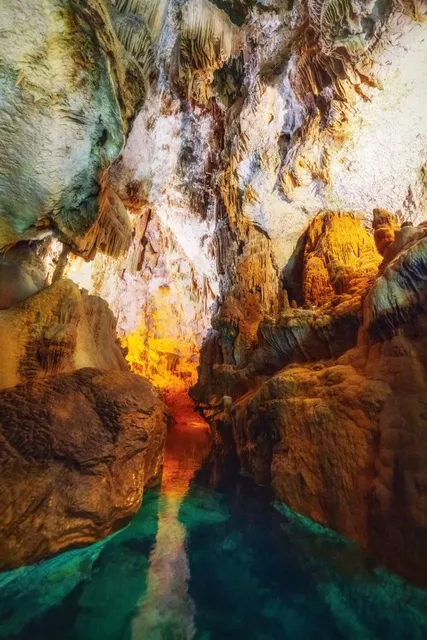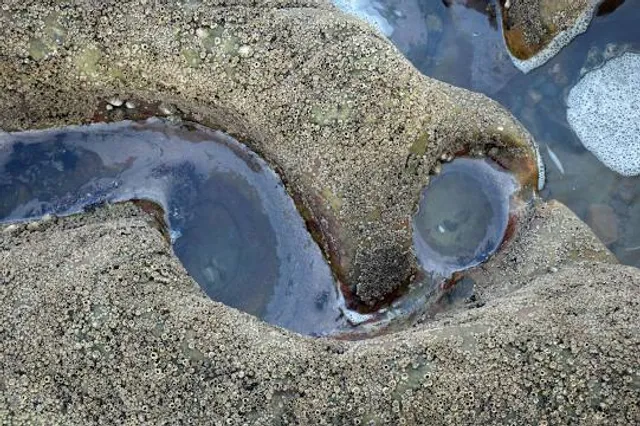Jeita Grotto is a system of two separate but interconnected karstic limestone caves located in the Nahr al-Kalb valley, about 18 kilometers (11 mi) north of Beirut, Lebanon. It is the longest explored cave in Lebanon. The upper cave is accessible by a pathway and has a length of 5.2 kilometers (3.2 mi). The lower cave is accessible by boat and has a length of 1.8 kilometers (1.1 mi).
The Jeita Grotto is a popular tourist destination and has been designated a UNESCO World Heritage Site. It is known for its stunning stalactites and stalagmites, which have been forming for millions of years. The upper cave is home to a variety of geological formations, including the "Organ Pipes", a series of tall, thin stalactites that resemble organ pipes. The lower cave is home to a large underground lake, which is illuminated by natural light from the entrance of the cave.
Here are some of the reasons why you should visit Jeita Grotto:
It is a natural wonder: The Jeita Grotto is a stunning example of the power of nature. The stalactites and stalagmites have been forming for millions of years, and they are truly awe-inspiring.
It is a UNESCO World Heritage Site: The Jeita Grotto is one of the most important natural landmarks in Lebanon, and it has been designated a UNESCO World Heritage Site. This means that it is considered to be of outstanding universal value.
It is a popular tourist destination: The Jeita Grotto is a popular tourist destination, and it receives over 600,000 visitors each year. This means that you will be able to enjoy the cave with other people who are interested in nature and history.
It is accessible: The Jeita Grotto is easily accessible from Beirut. There are regular bus and taxi services that can take you to the cave.
It is affordable: The entrance fee to the Jeita Grotto is relatively affordable. This means that you can enjoy this natural wonder without breaking the bank.
If you are planning a trip to Lebanon, I highly recommend visiting the Jeita Grotto. It is a truly unique and unforgettable experience.
Here are some tips for visiting Jeita Grotto:
Wear comfortable shoes: You will be doing a lot of walking, so it is important to wear comfortable shoes.
Bring a camera: Though it is prohibited to take photos inside the caves, You may be lucky to get a chance to use use your camera and capture the beauty of the cave.
Be respectful of the environment: The Jeita Grotto is a fragile environment, so it is important to show a high level of respect.
Do not touch the stalactites and stalagmites: The stalactites and stalagmites are very delicate, so it is important not to touch them.
Listen to the guide: The guide will be able to tell you more about the history and geology...
Read more
 Learn more insights from Wanderboat AI.
Learn more insights from Wanderboat AI.









